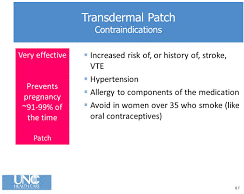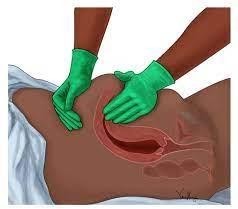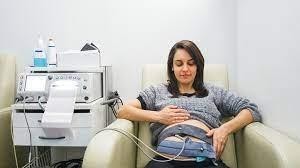Ati Maternal newborn 2020 with NGN
Ati Maternal newborn 2020 with NGN
Total Questions : 59
Showing 10 questions Sign up for moreA nurse in a prenatal clinic is reinforcing teaching with a client about expected physiological changes during pregnancy. Which of the following statements by the client indicates an understanding of the teaching?
Explanation
The correct answer is d. "I may develop discoloration on my cheeks from hormonal changes."
Choice a rationale:
- Statement:"I should expect to have burning when I urinate during the third trimester."
- Rationale:This statement is incorrect.Burning during urination is not a normal physiological change of pregnancy.It may be a sign of a urinary tract infection (UTI),which is a common infection during pregnancy.If a pregnant client experiences burning during urination,she should report it to her healthcare provider for evaluation and treatment.
Choice b rationale:
- Statement:"I may have an infection if I develop a dark line in the middle of my abdomen."
- Rationale:This statement is incorrect.A dark line in the middle of the abdomen,known as the linea nigra,is a normal physiological change of pregnancy.It is caused by hormonal changes that increase melanin production in the skin.The linea nigra typically appears in the second trimester and fades after delivery.
Choice c rationale:
- Statement:"I should expect my fingers and face to be swollen."
- Rationale:This statement is partially correct.Some swelling in the hands and face is common during pregnancy,especially in the third trimester.This is due to fluid retention caused by hormonal changes.However,excessive swelling,particularly in the hands and face,can be a sign of preeclampsia,a serious pregnancy complication.It's important to report any significant swelling to a healthcare provider.
Choice d rationale:
- Statement:"I may develop discoloration on my cheeks from hormonal changes."
- Rationale:This statement is correct.Hormonal changes during pregnancy can cause a variety of skin changes,including melasma,which is a brownish discoloration that often appears on the cheeks,forehead,and nose.Melasma is more common in women with darker skin tones and usually fades after delivery.
A nurse in a provider's office is collecting data from a client who is requesting a prescription for a transdermal contraceptive patch. The nurse should recognize which of the following client findings is a contraindication for this method of contraception.
Explanation
Rationale:
A) Incorrect - A blood pressure of 120/70 mm Hg is within the normal range and is not a contraindication for the transdermal contraceptive patch.
B) Incorrect - Peptic ulcer disease is not a contraindication for the transdermal contraceptive patch.
C) Correct - A weight of 98 kg (216 lb) is considered a contraindication for the transdermal contraceptive patch due to potential reduced efficacy in women with a body mass index (BMI) over 30. This method might be less effective for individuals with higher body weights.
D) Incorrect - A history of spontaneous abortion is not a contraindication for the transdermal contraceptive patch.

A nurse is auscultating fetal heart tones with a Doppler device for a client who is at 12 weeks of gestation. Where should the nurse expect to auscultate the fetal heart tones?
Explanation
Rationale:
A) Incorrect - The umbilical area is not a typical location for auscultating fetal heart tones.
B) Incorrect - The suprapubic area is not a common location for auscultating fetal heart tones.
C) Correct - At 12 weeks of gestation, the nurse would typically auscultate the fetal heart tones above the left iliac crest, which is in the lower abdomen. This is where the uterus is located at this stage of pregnancy.
D) Incorrect - Auscultating below the liver border on the right abdomen is not a standard practice for fetal heart tone assessment.
A nurse is caring for a client who is postpartum. The client is experiencing excessive vaginal bleeding and has a boggy uterus. Which of the following actions should the nurse take first?
Explanation
Rationale:
A) Incorrect - Applying oxygen is not the priority action in the case of excessive vaginal bleeding and a boggy uterus. Oxygen therapy would be appropriate if there were signs of respiratory distress or decreased oxygen saturation, but it does not directly address the primary concern of uterine atony and bleeding.
B) Incorrect - Administering methylergonovine might be appropriate, but the priority is to address the uterine atony with fundal massage first. Fundal massage helps stimulate uterine contractions and control bleeding, which is crucial in this scenario.
C) Incorrect - Encouraging the client to empty her bladder is important, but it is not the first action to take in the case of excessive bleeding and uterine atony. Immediate intervention to control the bleeding takes precedence.
D) Correct - Initiating fundal massage is the priority action in this situation. A boggy uterus with excessive vaginal bleeding indicates uterine atony, which is a potentially life-threatening condition requiring immediate intervention to prevent further bleeding.
Fundal massage helps the uterus contract and control bleeding. Addressing uterine atony is critical to prevent further hemorrhage and stabilize the client's condition.

A nurse is reinforcing teaching about perineal care to a client who is 2 hr postpartum and has an episiotomy and hemorrhoids. Which of the following statements by the client indicates an understanding of the teaching?
Explanation
A) Incorrect- Applying a heat pack to the area might increase inflammation and discomfort. Heat is generally not recommended for healing episiotomies and hemorrhoids.
B) Correct - "I will apply witch hazel pads after urination" is the correct statement. Witch hazel pads have a cooling and soothing effect that can provide relief from discomfort associated with episiotomies and hemorrhoids.
C) Incorrect- Using a numbing spray before cleansing might not be necessary and could interfere with proper cleansing. It's generally recommended to cleanse the area before applying any products.
D) Incorrect- Remaining in a sitz bath for 10 minutes is beneficial for perineal care, but it doesn't specifically address the use of witch hazel pads or understanding of the overall perineal care regimen. Furthermore, prolonged sitz baths, as can interfere with healing and increase the risk of infection.
A nurse is collecting data from a client at a 6-week postpartum checkup. The client tells the nurse, "I am breastfeeding and would like to use a birth control pill." Which of the following statements should the nurse make?
Explanation
A) Correct - "Progestin-only birth control pills are preferred for contraception during lactation." Progestin-only pills are generally considered safer for breastfeeding mothers as they are less likely to affect milk supply.
B) Incorrect- There is no strong evidence suggesting that taking birth control pills while breastfeeding increases the risk of breast cancer.
C) Incorrect- While breastfeeding can have contraceptive effects, relying solely on breastfeeding for contraception is not a foolproof method. It's recommended to use additional birth control methods if desired.
D) Incorrect- Birth control pills are not contraindicated for breastfeeding clients, especially if they are progestin-only pills. The preferred method, however, is progestin-only rather than combined hormonal pills.
A nurse is reinforcing teaching with a client about how to minimize nausea in the first trimester of pregnancy. Which of the following instructions should the nurse give to the client?
Explanation
A) Incorrect- Having a high-fat snack before bed might exacerbate nausea. It's generally recommended to have a light snack if needed.
B) Incorrect- Eating small, frequent snacks between meals can help manage nausea by preventing an empty stomach.
C) Incorrect- Drinking water with meals might not necessarily help with nausea and might worsen the feeling of fullness.
D) Correct - "Eat a slice of dry toast before getting out of bed" can help alleviate morning sickness in the first trimester. Eating a small, bland snack before rising can prevent an empty stomach, which can contribute to nausea.
A nurse is caring for a client who has hyperemesis gravidarum. The nurse should identify that the client is at risk for which of the following conditions?
Explanation
A) Incorrect- Elevated blood pressure is not a primary risk associated with hyperemesis gravidarum.
B) Incorrect- Leukopenia (low white blood cell count) is not a common consequence of hyperemesis gravidarum.
C) Correct - Hyperemesis gravidarum, severe nausea, and vomiting during pregnancy can lead to dehydration, which may affect amniotic fluid levels and result in hydramnios (excessive amniotic fluid).
D) Incorrect- Ketonuria (presence of ketones in the urine) is a possible consequence of excessive vomiting, but it's not the primary concern associated with hyperemesis gravidarum.
A nurse is caring for a client who is at 34 weeks of gestation and is preparing to undergo a nonstress test. Which of the following actions should the nurse take?
Explanation
A) Incorrect- Oxytocin is not typically administered during a nonstress test.
B) Incorrect- A nonstress test is used to assess fetal well-being and does not indicate Down syndrome.
C) Correct - A lateral tilt position (usually left lateral tilt) is recommended during a nonstress test to prevent compression of the vena cava and maintain proper blood flow to the uterus, which can optimize fetal heart rate monitoring.
D) Incorrect- NPO status is not typically required for a nonstress test. Nonstress tests are non-invasive and do not involve fasting.

A nurse is collecting data from a newborn who was born 2 hr ago. Which of the following findings should the nurse report to the provider?
Explanation
A) Incorrect- Overlapping suture lines in a newborn are common and usually resolve as the baby grows. This finding is not typically concerning.
B) Incorrect- Acrocyanosis, bluish discoloration of the hands and feet, is common in newborns and is a normal physiological response to adjusting to the outside environment.
C) Incorrect- Hypotonia, or decreased muscle tone, can be present in newborns and may improve over time. It's important to monitor but may not necessarily require immediate reporting.
D) Correct - A blood glucose level of 40 mg/dL in a newborn is considered low and requires intervention. Hypoglycemia in a newborn can have serious consequences and should be promptly addressed.
You just viewed 10 questions out of the 59 questions on the Ati Maternal newborn 2020 with NGN Exam. Subscribe to our Premium Package to obtain access on all the questions and have unlimited access on all Exams. Subscribe Now



